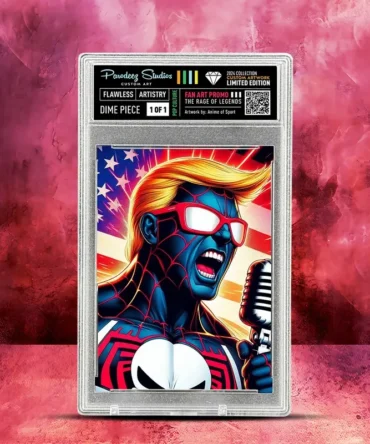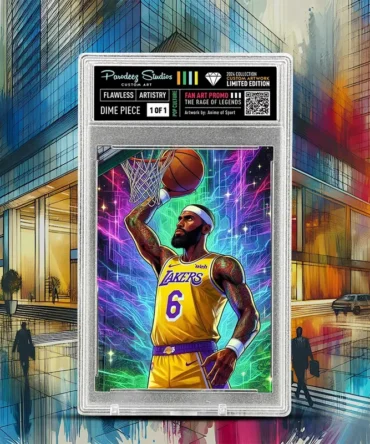In recent years, trading cards have transitioned from a childhood hobby to a billion-dollar industry, captivating collectors, investors, and nostalgia enthusiasts alike. Once a niche pastime rooted firmly in childhood memories, the trading card market has exploded, generating astronomical sales figures and redefining its value in modern culture. This article delves into how trading cards have transformed into a lucrative business and the key factors fueling their meteoric rise.
A Historical Foundation
The origins of trading cards can be traced back to the late 19th century. Initially used as promotional items by tobacco companies, these cards usually featured images of athletes, animals, and other cultural icons. Over the decades, their popularity surged, particularly during the 1980s and 1990s when companies like Topps, Fleer, and Upper Deck capitalized on the sports card craze.
In this era, kids would pack bubble gum for a chance to collect their favorite players, completing sets and trading duplicates with friends. But as the years went by, increased production, over-saturation of the market, and the digital age led to a decline in interest. However, the seeds of a resurgence were and are being sown.
The Resurgence of Interest
The comeback of trading cards can be attributed to a blend of nostalgia and the digital revolution. Online marketplaces like eBay and auction houses such as PWCC and Goldin Auctions have made it easier than ever for collectors to buy and sell cards, creating a global network of enthusiasts eager to engage.
Social media platforms, especially TikTok and Instagram, have played a pivotal role in shaping this revival. “Card-tok,” a popular TikTok community, showcases unboxing videos, card reveals, and trading tips, changing the way collectors interact with one another and with the market. Influencers and content creators have leveraged their platforms to educate and excite followers about the value of card collecting.
The Rise of Grading and Authenticity
The growth of grading companies like PSA (Professional Sports Authenticator) and BGS (Beckett Grading Services) has also significantly impacted the trading card market. These organizations assess the condition and authenticity of cards, assigning them a grade that determines their market value. High-graded cards have fetched staggering prices at auctions – a single card can sell for millions of dollars.
For instance, the sale of a 2003 LeBron James rookie card for over $5.2 million in 2021 marked a new benchmark for the industry. Scarcity, condition, and the player’s iconic status often dictate a card’s value, pushing collectors and investors to pursue the rarest pieces in the market.
Entering the Investor’s Playground
As trading cards have gained popularity, they have attracted a new breed of collectors—investors seeking alternative assets. In a way, trading cards have blended the worlds of collectibles and finance. Companies and individuals alike see value in trading cards as a long-term investment, especially since tangible assets like collectibles have historically outperformed traditional markets during economic downturns.
Investors recognize that cards featuring legends like Michael Jordan, Wayne Gretzky, or Kobe Bryant can yield impressive returns, prompting a surge in high-stakes transactions. Organizations have emerged that specialize in the trading card market, offering investors insights, market analyses, and even fractional ownership opportunities.
The Impact of Pop Culture
Pop culture has significantly influenced the trading card boom. The introduction of trading cards associated with popular franchises, including Pokémon, Magic: The Gathering, and sports leagues like the NBA and NFL, has diversified the market. New generations are discovering these cards, leading to renewed excitement and interest.
Furthermore, collaborations with contemporary artists and celebrities have created unique products that bridge the gap between art and collectibles. For instance, the rise of NFTs (non-fungible tokens) has given birth to digital trading cards that complement their physical counterparts, allowing collectors to explore a new realm of ownership and creativity.
The Future of Trading Cards
Looking ahead, the trading card industry shows no signs of plateauing. With continued interest from new collectors, evolving technologies, and the potential for new markets, the future appears bright. However, challenges still loom. The market’s volatility, potential over-saturation, and economic fluctuations could impact the industry.
As trading card collecting continues to evolve and expand, it has undeniably cemented itself as a significant player in the realm of collectibles. From a nostalgic childhood pursuit to a fledgling billion-dollar enterprise, trading cards symbolize a confluence of passion, investment strategy, and cultural storytelling, making them a modern-day treasure hunt for collectors young and old.
Conclusion
In a world captivated by digital experiences, trading cards remind us of the tactile joy of collecting and the inherent value in nostalgia. Whether they are viewed as investment opportunities or cherished memories, trading cards have become a goldmine for collectors, illustrating the fascinating ways in which pastimes can redefine their place in modern society. The journey from humble paper cards to a billion-dollar industry underscores the timeless appeal of collection and community—and the perpetual quest for the next big find.











